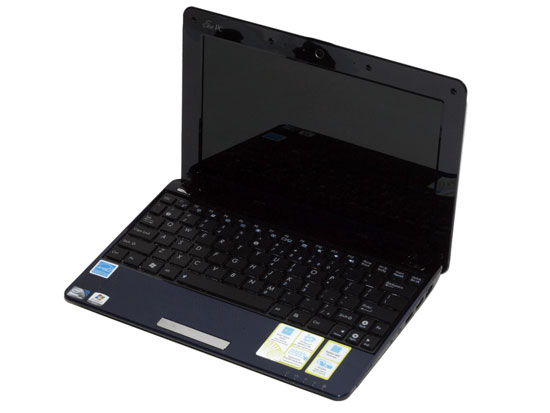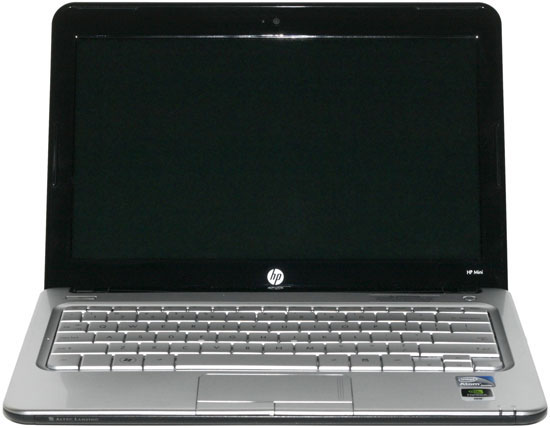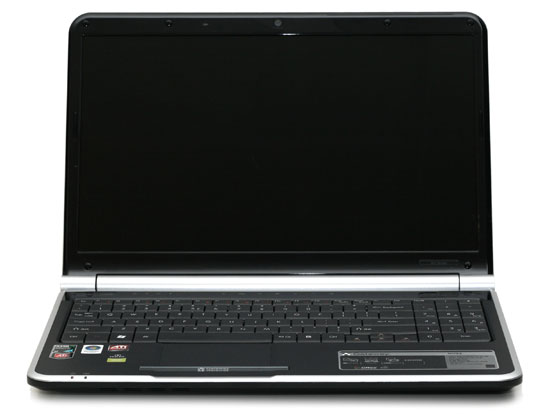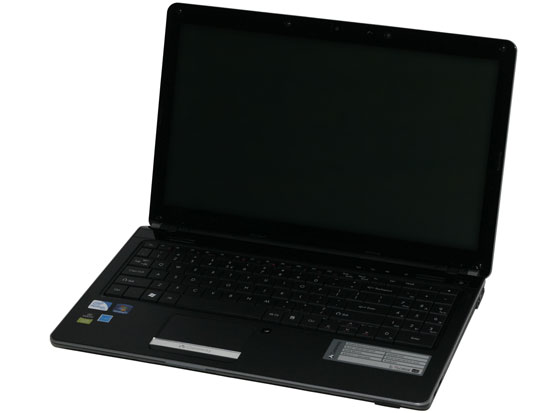Intel Core 2 CULV Roundup: Who Needs Atom?
by Jarred Walton on February 4, 2010 4:00 AM ESTMarket Recap (aka Conclusion Part 1)
We asked at the outset, "Who needs Atom?" It's now time to answer that based on our review today. What we really need to look at are the strengths and weaknesses of the various platforms at the various price categories. We've been over this ground before, but it bears repeating. We'll focus specifically on the entry level laptops and netbooks, with a price ceiling of around $800. Given those parameters, here's how things work out.

Sub-$350 is clearly the domain of the Atom-based netbooks, so it's definitely not dead. You'll sacrifice a lot in terms of performance, and features are also going to get cut. HD video decoding support generally isn't present, but we may see some netbooks start to ship with Broadcom Crystal HD to handle that. Intel also has their GMA 500 IGP that handles H.264 decoding quite well, but there were a lot of other issues with the drivers that made it a less than perfect solution. At present, look for Atom N450 netbooks for around $300 (give or take), and you can expect great battery life and very small form factors. So yes, Atom does have its uses.
$350-$500 is where things start to get messy. Atom netbooks obviously fall into this price range as well, but Microsoft won't let manufacturers ship Windows XP with more than 1GB RAM or a 160GB HDD. That's fine, but now you can get Windows 7 Starter (or even Home Premium in some cases) netbooks with 2GB RAM and larger HDDs. Battery life for such netbooks remains stellar, but the video decoding support is still lacking, barring a separate video decoder chip.

Another option that we encounter in this price range is NVIDIA's ION platform. ION works with the older Atom N270/N280, and battery life isn't as good as the Intel solution. The benefit is that you get full HD video decoding support - including the ability to play Blu-ray movies, assuming you have an external Blu-ray drive. Gaming is theoretically possible, but many games require more CPU power than Atom can deliver. Depending on the netbook features, ION looks to cut battery life by around 25% relative to non-ION N280 netbooks. So you can get better video support and around four hours of HD video playback and six hours of Internet surfing, or you can stick with vanilla Atom and get six hours of 720p (or lower) video playback, no Flash HD support, and up to ten hours of Internet surfing.
Need some more options? There are plenty of choices! CULV makes an entrance at just over $400, with battery life that's a bit better than ION netbooks. You also get 2GB RAM compared to most netbooks that ship with 1GB, and the GS45 chipset is much better than 945GSE so HD video content isn't a problem for the most part. (We're still waiting on full Flash 10.1 video support from Intel's IGPs, though.) Video playback can run for about 4.5 to 5 hours, and Internet battery life can reach seven hours.

If you prefer more performance and don't care as much about battery life, AMD laptops also make an appearance in this price bracket. You can find HP/Compaq and Acer/Gateway laptops with Athlon II M300/M320, 3GB/4GB RAM, and HD 4200 graphics for just under $500. These will typically be 15.6" notebooks rather than smaller form factors, and the size combined with the component choices will deliver battery life of around 2 hours for video, 2.5 hours Internet, or up to 3.5 hours in lighter loads. If you want to drop back to the older Athlon X2 CPUs and HD 3200 graphics, you can even get such laptops for around $400 (i.e. the Gateway NV52 line). We'd recommend against any of the single-core CPU solutions (AMD or Intel), as the lowered performance isn't backed by significantly improved battery life - CULV will do better in our opinion. Still, if you're okay with the compromise, you can find AMD Neo laptops as small as 11.6" with the MV-40 CPU. (Look at the MSI X610 results to see what sort of performance you'll get.)
Need even more choices? Well, they're there. Standard Intel-based (i.e. non-CULV) laptops are also available for just under $500 now, with CPUs like the Pentium T4300. The Gateway NV58 is representative of this class of laptop. Battery life is going to be around 2.5 hours for video, three hours for Internet, and up to 4.5 hours in light workloads. Basically, you'll get about 25% more battery life and 25% more CPU performance than the competing AMD solutions, but gaming isn't at all practical. (It's at least borderline on many games with the HD 3200/4200, with plenty of slightly older titles that run fine.)

At $500-$650 CULV really starts to show up a lot. Now instead of 2GB RAM, you get 4GB and generally larger hard drives. The Pentium SU4100 solutions are typically the best bang for the buck, with Core 2 Duo SU7300 usually adding $75 and only a small (5% or less) performance increase. SU7300 does add VT-x support, though, if you feel that's important. For battery life without compromising too much on performance, we feel CULV is an excellent choice. Laptops like the models we reviewed today would work great for college students, allowing you the freedom to work on papers and take notes all day at campus without the need to use an AC adapter. You can do the same with Atom, but these are faster and generally more capable. You still have to give up gaming performance, though - you'll need a discrete GPU with CULV if that's what you're after.
If you don't care about battery life and you want gaming performance, you can also turn to regular AMD and Intel laptops with GPUs like the Mobility Radeon HD 4330 or GeForce G210M (or 8200M/9300M). Another option is the new Core i3 laptops, with prices starting at around $600 for the i3-330M complete with 4GB DDR3, 320GB HDD, and the improved Intel HD Graphics. And from here the options begin to open up rapidly. As we've discussed already, the only thing you really need for CULV to handle games is a more capable GPU, and the ASUS UL line provides that as well as switchable graphics, giving you the best of both worlds. The smaller models cost a bit more, but the UL50Vt is currently selling for as little as $700. Don't like NVIDIA's GeForce line but still want CULV? Try the Lenovo U450P 33892GU for $800 (but we'd stick with the ASUS UL50Vt or UL80Vt).










62 Comments
View All Comments
yyrkoon - Thursday, February 4, 2010 - link
Jarred. Without even having to read the article/comparison here, I could have told you this would have been a no brainer.Last year I purchased a Toshiba Laptop with a T3400 CPU in it for less than $400( barely ) with free shipping. Now technically, this CPU is labeled as a "Pentium dual core. What that means exactly, I am not sure. But what I can tell you about this complete system is that at max load, it draws less than 40W( 17W light duty / idle ), and will play all but the most intense games reasonably well.
Now what really surprised me about this laptop, after the fact that I did not think it could even play Hellgate: london( and it does, well, mostly ). Was that it encodes h264 video at close to the same speed as my desktop. Granted, my desktop is somewhat aged, but is no slouch. A P35 based system running an E6550 with 4GB of ram. Over Clocked to run 1:1 with the memory( 2.8Ghz ). Now perhaps I am missing something here, like perhaps Handbrake is not the best app to use to encode h264 ( x264 ), or maybe I am missing something else. Either way, I am fairly impressed. Which as I get older is something that is not as easy as it once was to do.
So my point here, is that if an older system based off older technology can do well in this arena. I can see why newer technology can put the Atom to shame for a slightly higher price, and slight higher power consumption.
One thing that does have me confused. Is why vendors/ OEM's have not implemented low power / performance parts for the common desktop. There certainly is an interest, all one has to do is search the web for a while and find 1000's of people out there trying to do different various things along these lines.
For instance. Many of us possibly know that getting a low power desktop is not much of a challenge(read: ~50W full load, including an LCD ). However, popping in a discrete video card that has any sort of decent performance will more than likely triple your load at the wall. Why nVIdia/ATI insist on bleeding us dry with costs on the cards, and then insult us further by requiring us to buy an even bigger power supply. Not to mention the first born children we're obligated to give our local power companies for powering such beasts. Is it too much of a stretch of imagination to put a mobile graphics processor on a PCI-E 16x PCB ? I think not.
With the above said. No, this does not imply gaming. Discrete graphics vs. integrated / onboard is a huge performance gain on its own. There are many different application out there that could benefit from this, and gaming is just a minor part of that.
Souka - Thursday, February 4, 2010 - link
My brother bought a HPmini netbook for our Mom, she hated how slow and unresponsive it was.All she did on it was read her hotmail, look at some gardening sites, and read the news... She was quite disappointed how slow it was compared to her 8 year old Pentium4 thinkpad laptop.
I tweaked it best I could for performance, cpu typically wasn't very busy, 200mb+ free ram, hard drive not too busy... just plain sluggish.
I even removed the Antivirus and all unecssary runtime apps... no noticible difference
Ended up getting her a cute little used Sony Vaio ULV book... she loves it...and I paid just a bit more than the netbook.
Oh yeah...the Vaio gets 5-8hrs run time on used battery... nice
Mumrik - Thursday, February 4, 2010 - link
The display is "11.6" LED Glossy 16:9 768p (1366x768)" in the box for the Gateway. It should be 15.x...aglennon - Thursday, February 4, 2010 - link
I always wondered, Would battery life when playing videos be longer if you played the videos off of a flash drive rather than the hard drive?You could put the hard drive to sleep to save on the battery draw. Or would you?
JarredWalton - Friday, February 5, 2010 - link
My experience is that powering of the hard drives may not occur as frequently as you would expect. Even when idle for over an hour, if you look at a running laptop you will often see the HDD activity light blinking periodically. I can try to test this, but I'd be surprised if the results change much. They could even become worse because of all the USB activity.... Hmmm, this could be interesting. Would USB flash drive model make a difference? Most of my flash drives are pretty old/slow, but they should handle movies fine.aglennon - Friday, February 5, 2010 - link
It seems it may. I think it would depend if you could truly put the HD into standby mode. In the specs I've been able to find, USB flash drives pull about 60-80mA compared to WD 2.5" Hard Drives which pull about 500mA when running, 400Ma when idle, but only 50mA when in standby.I would think it would expand battery life considerably for those long airplane flights.
JarredWalton - Friday, February 5, 2010 - link
Testing is underway. I had to use DivX, since my largest USB device is only 4GB and my x264 video is larger than that. Either way, it should be enough to tell if things have changed at all. (I also need to verify the result with the HDD, since I think I have a different DivX codec doing the work now. I used Win7's native support initially, since it's lower CPU use and better battery life than ffdshow.)JarredWalton - Sunday, February 7, 2010 - link
So here are the results (bearing in mind that I am not using the built-in Win7 codec because the ffdshow codec has taken priority and I didn't want to take the time to figure out how to fix the problem):DivX from USB: 268 minutes
DivX from HDD: 291 minutes
So, by my testing using a USB flash stick reduced battery life by around 8%. Ouch. Or put another way, it looks like USB increased average power use from around 12.8W for the HDD to 13.9W (based on battery capacity).
My best guess is that the HDD isn't powering down, and/or the USB traffic is creating a lot more CPU usage than SATA HDD accesses. It's also entirely possible that the USB device I used is less than optimal - read/write speeds are nowhere near what you could get with a modern USB 2.0 stick, let alone USB 3.0. I think it can read/write at 13MB/s at best.
crimson117 - Thursday, February 4, 2010 - link
How does the recently released Alienware m11x stack up?synaesthetic - Friday, February 5, 2010 - link
Hardware Heaven has a review of the M11x already up. They're claiming that it's the best Alienware system yet.I'm on the fence. I don't like the design much and I think the screen's too small for the weird form factor. Really I think they should have bumped the chassis size up slightly and tossed in a 13.3" display.
The price is very tempting though... entry-level configs starting at $800 and directly competing with systems like Asus's UL30Vt, but with a LOT more graphics muscle.